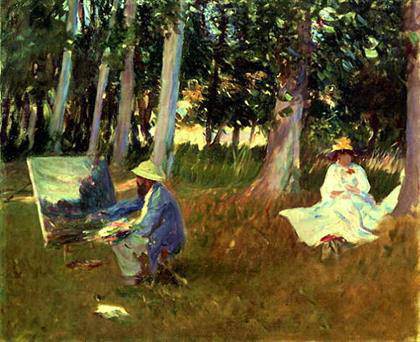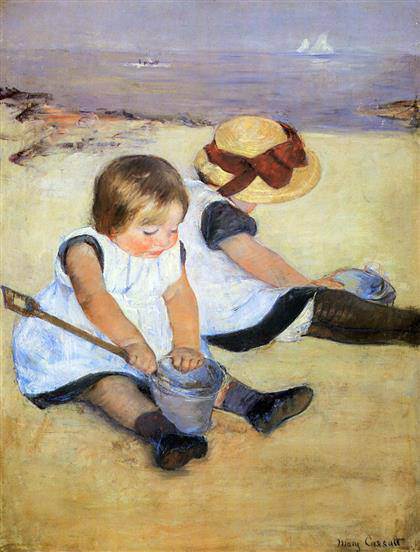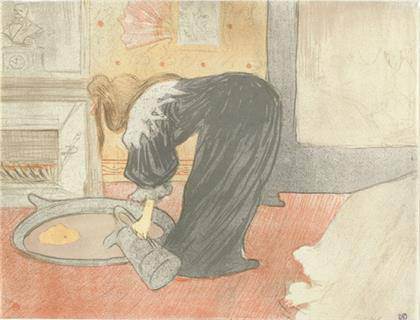
John Singer Sargent
Claude Monet Painting by the Edge of a Wood, 1885

Mary Cassatt
Children on the Beach, 1884
American Impressionism at National Galleries Scotland ‘American Impressionism: A New Vision’ brings together nearly 80 paintings by some of America’s most celebrated artists, such as James McNeill Whistler, John Singer Sargent and Mary Cassatt. 19 July 2014 – 19 October 2014.]]>
Source: National Galleries of Scotland
The exhibition reflects the impact of Impressionism on both Americans working abroad in the period from 1880 to 1890, and those working at home in the following decade. It begins with iconic paintings by Cassatt and Sargent, who cultivated friendships with French Impressionists – in particular Monet and Degas – and participated in the development and promotion of this revolutionary new way of painting.
More than any other American artist working in France, Mary Cassatt (1844-1926) helped to shape Impressionism. Through her friendships with French artists Edgar Degas and Berthe Morisot she participated in four Impressionist exhibitions between 1879 and 1886. Two of her finest works, “Children on the Beach” (1884) and “Young Girl at a Window” (c.1884), appeared in the eighth and final Impressionist exhibition in Paris in 1886 and are included in the Edinburgh show.
John Singer Sargent (1856-1925) was one of several young artists from North America who worked at Giverny in Normandy in the late nineteenth century. He developed a close friendship with Monet and visited him at his house in Giverny on several occasions; he immortalised their shared work sessions in his 1885 painting “Claude Monet Painting by the Edge of a Wood”. The work shows the French artist at work on a canvas that has been identified as “Meadow with Haystacks near Giverny”, one of the earliest works in his famous series of haystacks paintings.
Other artists assimilated Impressionism in a more gradual way: Theodore Robinson (1852-1896) experimented with the changing effects of light while working outdoors alongside Monet at Giverny, as seen in the luminous painting “Blossoms at Giverny” (1891). Frederick Childe Hassam (1859-1935) incorporated impressionist colours and subjects into his more traditional ‘Salon-style’ pictures, using bright colours to capture the effect of a bright sunny day in “Grand Prix Day (le jour du grand prix)”, c.1888.
In America, artists turned to Impressionism slightly later. Between 1890 and 1900 painters such as Hassam, William Merritt Chase, Edmund Tarbell and John Twachtman adapted Impressionism by responding to the new subject matter, compositions and colours of the movement in scenes depicting their native country and creating a new vision for an American audience. Their subjects included New York parks, East Coast beaches, New England villages and, of course, the image of the American woman. Prismatic colour, broken brushwork and purple shadows became prevalent at exhibitions in New York, Philadelphia and Boston in the early 1890s.
Related content
Impressionism from the Sterling and Francine Clark Art Institute at MFA Houston (exhibition, 2014)
Follow us on:


